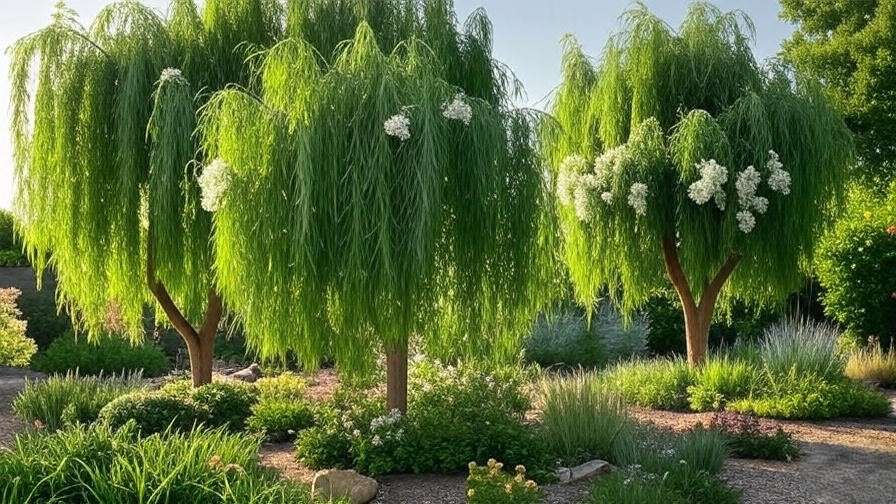Imagine transforming your garden into a serene oasis with the graceful, weeping foliage of willow myrtle trees swaying gently in the breeze. These stunning Australian natives, known for their lush greenery and delicate white blooms, are a favorite among gardeners and landscapers alike. Whether you’re a beginner or a seasoned plant enthusiast, growing and caring for willow myrtle trees (Agonis flexuosa) can elevate your outdoor space while supporting local ecosystems. In this comprehensive guide, I’ll share expert-backed strategies—drawn from years of horticultural experience—to help you cultivate thriving willow myrtle trees. From planting to pruning, you’ll find everything you need to ensure your trees flourish! 🌳
Let’s dive into this ultimate resource for growing healthy, vibrant willow myrtles that will make your garden the envy of the neighborhood.
What Are Willow Myrtle Trees? 🌳
Overview and Characteristics
Willow myrtle trees, scientifically known as Agonis flexuosa, are native to Western Australia and beloved for their elegant, willow-like appearance. These evergreen trees or large shrubs feature slender, drooping leaves and clusters of small, star-shaped white flowers that bloom in spring and summer. Their aromatic foliage releases a subtle peppermint scent when crushed, adding sensory charm to any garden. Depending on the cultivar, willow myrtles can grow 15–30 feet tall, with dwarf varieties like ‘Nana’ staying under 10 feet, making them versatile for various landscapes.
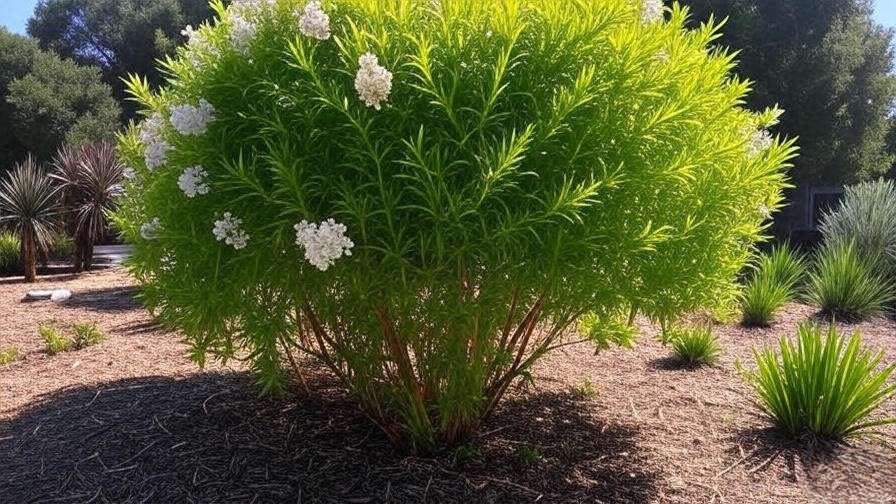
Ecological and Aesthetic Benefits
Willow myrtle trees are more than just a pretty face. They attract pollinators like bees and birds, supporting biodiversity in your garden. Their dense foliage provides shade, privacy, and wind protection, making them ideal for hedges or standalone specimens. As a low-maintenance, drought-tolerant species, they’re perfect for sustainable landscaping.
Expert Insight: “Willow myrtles are a cornerstone of eco-friendly gardens,” says Dr. Jane Thompson, a botanist specializing in Australian natives. “Their adaptability and wildlife benefits make them a must-have for any environmentally conscious gardener.”
Ideal Growing Conditions for Willow Myrtle Trees ☀️
Climate and Hardiness Zones
Willow myrtle trees thrive in USDA hardiness zones 9–11, excelling in Mediterranean or coastal climates with mild winters and warm summers. They tolerate light frosts but may need protection in colder regions. For gardeners outside these zones, container planting or indoor overwintering can make cultivation possible.
Soil Requirements
These trees prefer well-draining, slightly acidic to neutral soil (pH 5.5–7.0). Sandy or loamy soils are ideal, but they adapt to various soil types with proper preparation. Test your soil with a pH kit and amend heavy clay soils with organic matter like compost to improve drainage.
Sunlight and Water Needs
Willow myrtles love full sun but can tolerate partial shade, especially in hotter climates. Aim for at least 6 hours of direct sunlight daily for optimal growth. Young trees need regular watering—about 1 inch per week—while established trees are drought-tolerant and require less frequent irrigation.
Pro Tip: Install a drip irrigation system to deliver consistent moisture without waterlogging the roots, ensuring your willow myrtle stays healthy. 💧
How to Plant Willow Myrtle Trees 🌱
Choosing the Right Tree
Select a healthy willow myrtle from a reputable nursery. Look for vibrant green leaves, no signs of pests, and a well-developed root system. For smaller spaces, consider dwarf cultivars like ‘Nana’ or ‘Jervis Bay Afterdark’ with its striking burgundy foliage. If propagating, take semi-hardwood cuttings in summer for best results.
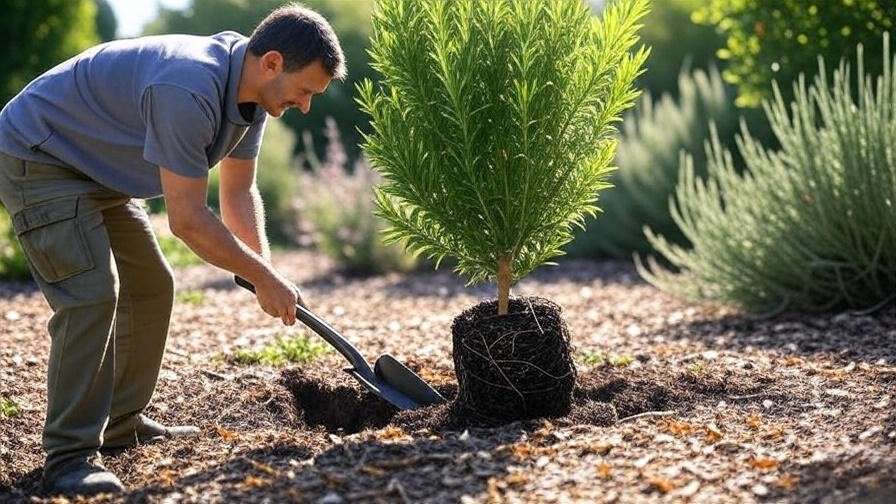
Step-by-Step Planting Guide
- Choose the right time: Plant in spring or early fall for optimal root establishment.
- Prepare the site: Dig a hole twice as wide and as deep as the root ball.
- Amend the soil: Mix in compost or aged manure to enrich the planting area.
- Plant the tree: Place the tree in the hole, ensuring the root crown is level with the soil surface. Backfill and tamp down gently.
- Water thoroughly: Soak the soil to settle the roots and eliminate air pockets.
- Mulch: Apply a 2–3 inch layer of organic mulch (e.g., bark or wood chips) around the base, keeping it away from the trunk.
Example: A visual checklist for planting can ensure you don’t miss a step—check root health, measure hole depth, and confirm proper mulching.
Spacing and Location Tips
For standalone trees, space willow myrtles 10–15 feet apart to allow for their mature spread. For hedges, plant 3–5 feet apart for a dense screen. Avoid planting near foundations or underground pipes, as their roots can spread over time.
Caring for Willow Myrtle Trees 🌼
Watering and Irrigation
Water young willow myrtles weekly during their first year, ensuring the soil stays moist but not soggy. Once established, reduce watering to every 2–3 weeks, depending on rainfall. Watch for signs of overwatering (yellowing leaves) or underwatering (wilting or leaf drop) and adjust accordingly.
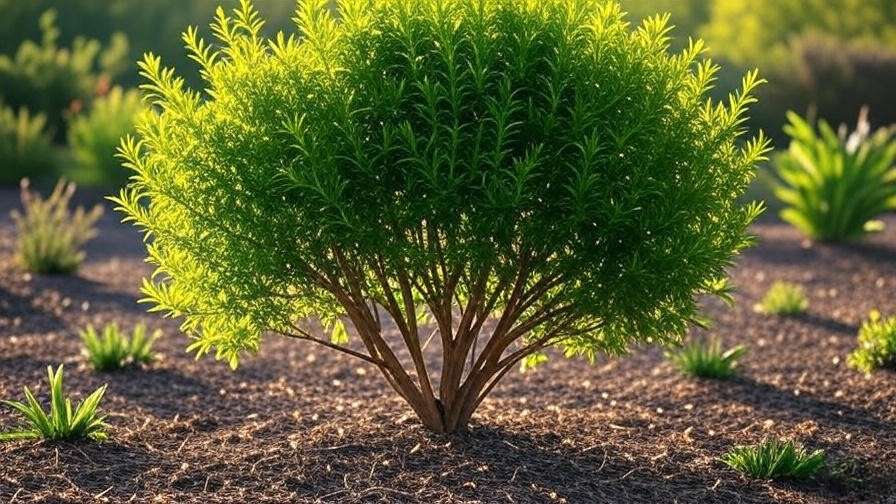
Fertilizing for Optimal Growth
Apply a slow-release, low-phosphorus fertilizer designed for native plants in early spring. Over-fertilizing can harm willow myrtles, so follow package instructions carefully. A balanced 10-10-10 fertilizer works well for young trees, applied once or twice annually.
Pruning and Shaping
Prune willow myrtles in late winter or early spring to maintain shape and remove dead or crossing branches. Use clean, sharp pruning shears to make angled cuts, promoting healthy regrowth. For hedges, light trimming throughout the growing season keeps them tidy.
Expert Tip: Sterilize pruning tools with rubbing alcohol to prevent the spread of fungal diseases. ✂️
Mulching and Weed Control
Mulch annually with organic materials to retain moisture, regulate soil temperature, and suppress weeds. Keep mulch 2–3 inches from the trunk to prevent rot. Hand-pull weeds or use a natural herbicide to protect the tree’s root zone.
Common Problems and Solutions 🐛
Pests and Diseases
Willow myrtles are relatively pest-resistant but may attract scale insects or aphids. Control infestations with neem oil or insecticidal soap, applied early in the morning. Root rot, caused by poor drainage, is a common issue. Ensure proper soil drainage and avoid overwatering to prevent it.
Case Study: A gardener in Perth noticed sticky residue on their willow myrtle leaves, indicating scale insects. After applying neem oil weekly for a month, the tree recovered fully, demonstrating the effectiveness of natural pest control.

Environmental Stressors
Drought, strong winds, or salty coastal air can stress willow myrtles. Protect young trees with windbreaks or burlap during storms. In drought conditions, deep water every 10–14 days to keep roots hydrated.
Troubleshooting Growth Issues
- Yellowing leaves: Check for overwatering or nutrient deficiencies; test soil and adjust care.
- Stunted growth: Ensure adequate sunlight and proper soil pH.
- Leaf drop: Investigate watering issues or pest activity.
Landscaping Ideas with Willow Myrtle Trees 🏡
Using Willow Myrtles in Garden Design
Willow myrtles shine as focal points in mixed borders, shade trees in courtyards, or lush hedges along property lines. Pair them with native companions like kangaroo paw or grevillea for a cohesive Australian garden aesthetic. Their weeping form adds drama to water features or rock gardens.
Container Gardening
Dwarf varieties like ‘Nana’ thrive in large pots, perfect for patios or urban spaces. Use a well-draining potting mix and ensure containers have drainage holes. Water container-grown trees more frequently, as pots dry out faster.
Inspiration: Picture a row of potted willow myrtles lining a sunny balcony, their foliage cascading like a green waterfall. 🌿
Sustainability and Willow Myrtle Trees 🌍
Eco-Friendly Benefits
Willow myrtle trees are a fantastic choice for environmentally conscious gardeners. As native Australian plants, they’re naturally adapted to thrive in low-water conditions, making them ideal for drought-tolerant landscapes. Their dense foliage provides habitat and food for pollinators like bees and native birds, boosting local biodiversity. Additionally, their deep root systems help prevent soil erosion, especially in coastal or windy areas. By choosing willow myrtles, you’re reducing your garden’s water and maintenance needs while supporting a healthier ecosystem.
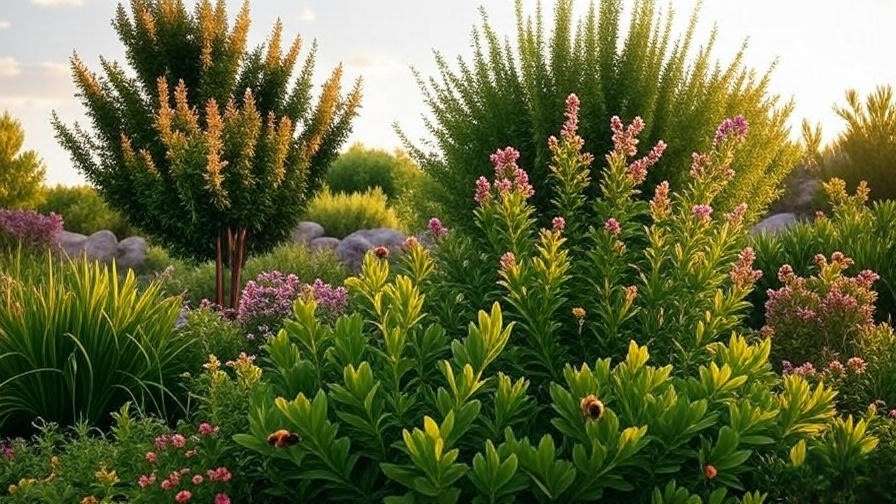
Native Plant Gardening
Incorporating willow myrtle trees into a native plant garden is a smart way to create a sustainable, low-maintenance landscape. Pair them with other Australian natives like bottlebrush (Callistemon), westringia, or lomandra for a cohesive design that thrives with minimal intervention. Native gardens require less fertilizer and water, saving you time and resources while promoting ecological balance.
Expert Insight: “Willow myrtles are a perfect example of how native plants can transform gardens into sustainable havens,” says Dr. Emily Carter, an environmental scientist specializing in native flora. “Their resilience and ecological benefits make them a cornerstone of modern landscaping.”
FAQs About Willow Myrtle Trees ❓
Q1: How fast do willow myrtle trees grow?
Willow myrtles are moderate to fast growers, typically adding 1–2 feet per year under optimal conditions. Dwarf varieties like ‘Nana’ grow more slowly, making them ideal for smaller spaces.
Q2: Can willow myrtle trees survive in cold climates?
While best suited to USDA zones 9–11, willow myrtles can tolerate light frosts. In colder climates, grow them in containers and bring them indoors during winter, or provide frost protection with burlap or frost cloth.
Q3: Are willow myrtle trees safe for pets?
Yes, willow myrtles are non-toxic to dogs, cats, and other pets, making them a safe choice for pet-friendly gardens. Always monitor pets to prevent excessive chewing, which could damage the tree.
Q4: How do I propagate willow myrtle trees?
Propagate willow myrtles from semi-hardwood cuttings taken in summer. Dip cuttings in rooting hormone, plant in a well-draining mix, and keep moist in a shaded area until roots form (about 6–8 weeks).
Q5: What’s the best way to protect young trees from wind?
Stake young trees with flexible ties to provide support without restricting growth. Install windbreaks like temporary fencing or plant companion shrubs to shield them during establishment.
Conclusion 🌿
Growing and caring for willow myrtle trees is a rewarding journey that brings beauty, sustainability, and ecological benefits to your garden. By following this guide—choosing the right planting site, providing proper care, and addressing challenges—you’ll cultivate thriving trees that enhance your outdoor space for years to come. Whether you’re creating a lush hedge, a shady retreat, or a vibrant native garden, willow myrtles are a versatile and low-maintenance choice. Start your willow myrtle adventure today and watch your garden transform into a green masterpiece!
Call-to-Action: Have you grown willow myrtle trees or tried a native plant garden? Share your tips and experiences in the comments below, or explore our related articles on Australian native plants for more inspiration! 😊

